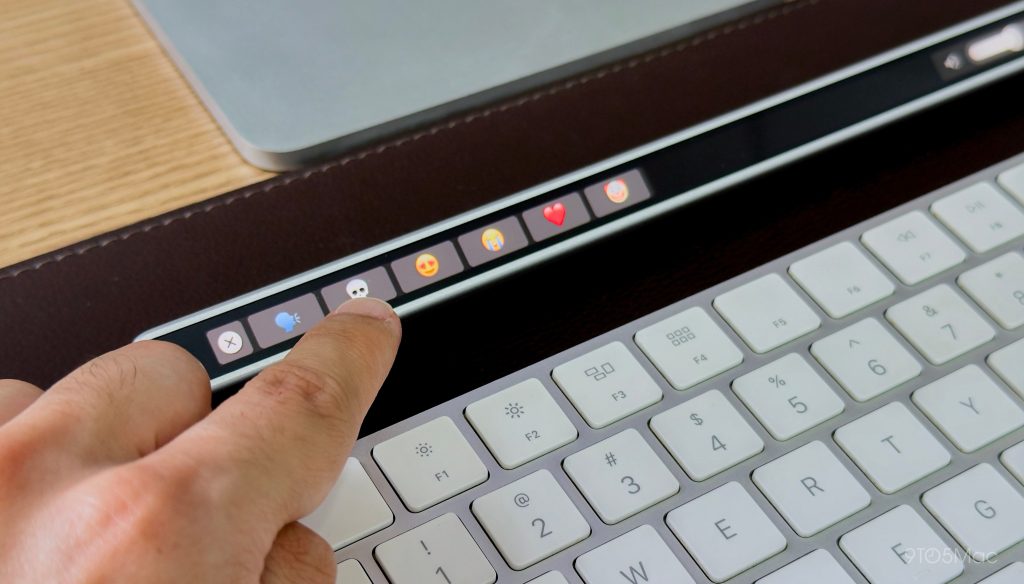
In action: Flexbar brings back the Touch Bar to your Mac – but is it worth it?
We recently reported on Flexbar, a project developed by ENIAC Technology. This project brings back the Touch Bar, the controversial (and now defunct) small touch screen that Apple implemented on the MacBook Pro keyboard. Sure, Apple had a reason to discontinue the Touch Bar, but some users miss it. I picked up a Flexbar unit to see what it would be like to use something like the Touch Bar again.
Rethinking the Touch Bar
If you don’t remember the Touch Bar, it was introduced in 2016 when Apple redesigned the MacBook Pro. The Touch Bar replaces the traditional row of function keys with a touch strip that displays specific buttons for each app. The idea sounded great, but in reality, many people didn’t like the experience of interacting with virtual buttons on the keyboard.
I owned a MacBook Pro with the Touch Bar and have mixed feelings about it. Apple made a really bold attempt to try something different, but I don’t think users really wanted or needed it. The Touch Bar feels modern, and it was really cool to select emojis or swipe through a project’s timeline in Final Cut Pro.
But most of the time, the Touch Bar was extremely annoying. It was buggy, often unresponsive, and supported by few apps. Apple will discontinue the Touch Bar in 2021, saying that “pro users like the tactile feel of mechanical keys.” I have no objection to that, but I also think there was room for improvement.
Usage of flex bar
A few years later, a group of engineers created Flexbar. It looks very similar to the Touch Bar, but in the words of its creators, it “addressed user frustrations and enabled new levels of productivity.”
The flex bar is made of metal for a premium look that matches the design of the Magic Keyboard and other Apple products. The device features an AMOLED touchscreen panel for displaying content. The resolution is sharp enough to see all icons and text.
While the Touch Bar had presets of controls, the Flexbar is fully customizable through a companion app. Users can add shortcuts to open apps, folders, and websites, run scripts, adjust volume, and play key combinations or sequences of commands. You can also import and export layouts, which is great for exploring other users’ different ideas.
I’ve only been using Flexbar for a few days, so I haven’t had time to dig into all the settings. We’ve added shortcuts for frequently used apps, a volume slider, a button to type to Siri, and a button to lock the screen. Flexbars can consist of a fixed set of buttons, or they can scroll to reveal more buttons. You can also add controls to folders so they only appear when you need them.
Think of it like a stream deck, but with a touch version. For example, here I also created shortcuts to run scripts that I use every day and to open folders that contain assets that I use to edit images and videos. And of course, we created shortcuts using our favorite emojis. This is one thing I really missed about the Touch Bar.
More advanced features and third party plugins
Users can do more with Flexbar to create more advanced controls. For example, you can save the placement of apps on your screen so you can open all your apps in their respective positions with a single tap. There are also controls for scrolling the screen.
What about third-party apps? Engineers have created an SDK for Flexbar to allow apps to provide specific interactions. Unfortunately, the plugin store won’t be available until late 2025, so early adopters will be limited to built-in controls. This can be a bit of a pain since Safari currently doesn’t have a tab switcher-like feature.
By the way, the Flexbar has haptic feedback when you interact with the controls. The device comes with a magnetic stand for improved ergonomics when used on a desk, and connects to your Mac via a USB-C cable. I’ve only noticed a few issues, such as Flexbar not turning off when the Mac goes to sleep mode, but since I’m using a beta software prototype, this could just be a bug.
Are flex bars worth it?
Well, the Flexbar idea is certainly interesting, especially for those who miss the Touch Bar. There is no trade-off to using a keyboard as it does not interfere with the physical keyboard. I really appreciate the Apple-like design, magnetic stand, customization options, and haptic feedback. It’s also convenient to use in a desktop environment (remember, the Touch Bar used to be a MacBook thing)
Feature request for engineers: It would be interesting to have an option to replicate the native macOS Touch Bar (which exists even if you don’t have a Mac with a Touch Bar) on Flexbar. I don’t think this is easy to do, but I’ve seen several people in the community interested in considering this idea. Why not?

Flexbar was announced in a Kickstarter campaign and is expected to launch in February 2025. The accessory will cost $179 at launch, but you can support the project and pre-order it for $149. Works with Mac and Windows PCs.
Is it an essential product? Probably not. But for those who prefer accessories like the Stream Deck or Logitech’s MX Creative Console, the Flexbar offers similar functionality in a more elegant, modern design. The SDK for third-party plugins is also very exciting for the future of the product.







